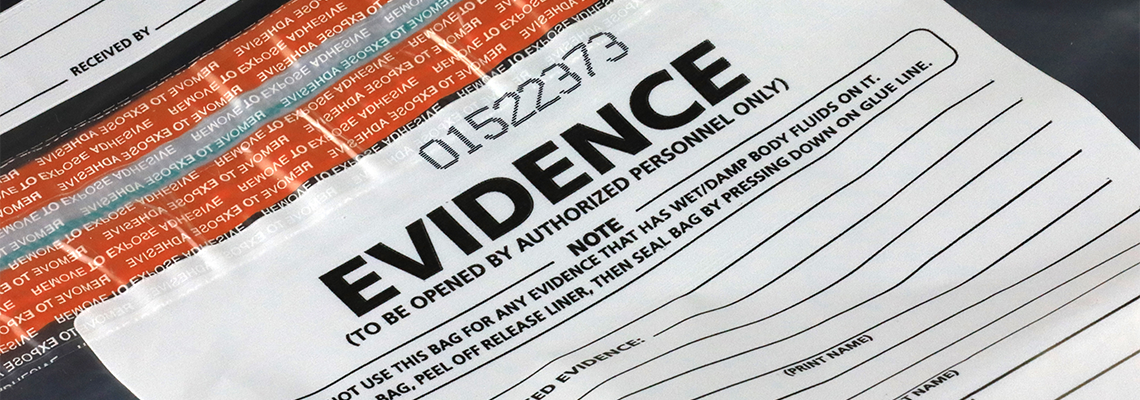Understanding Evidence in a
Criminal Trial

Evidence in criminal cases can come in many forms. There can be witnesses, video footage, recordings, digital evidence such as emails or text messages, physical objects such as weapons, scientific results such as blood or DNA tests, photographs, and even graphs or charts prepared to explain what happened.
If you are being investigated for a criminal charge, or already facing one, in or around Atlanta, Georgia, contact me at Kyle H. Jarzmik Law. I worked for five years as a prosecutor, so I understand the legal system from both sides of the aisle. I can anticipate the tactics and evidence to be presented by prosecutors, challenge that evidence, and provide you with an aggressive defense.
I also proudly represent clients throughout the state of Georgia, including Fulton County, Cobb County, Dekalb County, Gwinnett County, Cherokee County, Douglas County, and Paulding County.
What Is Evidence?
In January 2013, Georgia enacted a new evidence code modeled largely on the Federal Rules of Evidence, which applies to both criminal and civil proceedings. One of the main points in the federal rules regards the exclusion of evidence when its “probative value is substantially outweighed by the danger of unfair prejudice, confusion of the issues, or misleading the jury.” Probative is another term for its ability to prove the case.
If you’ve ever watched or been privy to a courtroom proceeding, you probably are familiar with the various types of evidence that can and will be submitted, both by the prosecutors and the defense. In general, evidence can be broken down into four categories:
TESTIMONIAL: On-site witnesses or expert witnesses, depending on the nature and circumstances of the charge, may be called in to offer their testimony.
DOCUMENTARY: This category includes not only written documents, but also digital, video, audio, and more, perhaps even social media or Web posts.
TANGIBLE OR PHYSICAL: This is a version of “the smoking gun” as it relates to some charges – a weapon or other object that judges and juries can hold and inspect.
DEMONSTRATIVE: Here charts and graphs are employed to illustrate what allegedly happened.
For example, say you are pulled over for suspicion of driving under the influence (DUI). The officer on the scene may use different approaches to obtain evidence to use against you. One avenue, of course, is that person’s own observations, which can become testimony. Another might be a breathalyzer test or a field sobriety test, sometimes referred to as “roadside Olympics.” You may also be taken in to headquarters and ordered to take a blood test. There is also usually a dash camera or body camera video from the police officer. That’s a pretty simple example of obtaining evidence in that the police and prosecutors only want to show that your blood alcohol content (BAC) was above the per se limit of 0.08 percent.
Direct vs. Circumstantial Evidence
A person can be convicted not only on direct evidence but also on circumstantial evidence, or a combination. The law makes no distinction between the weight to be given to either direct or circumstantial evidence.
Direct evidence can be witness testimony. For instance, someone is present in the same room when the defendant assaults another person and can provide details of what happened. However, if the witness enters the scene and sees only someone fleeing while a victim is lying on the floor in pain, that is circumstantial evidence.
Relevance of the Evidence
You’ve no doubt heard that evidence submitted in a trial must be relevant. It also must be material and not hearsay, privileged, or exclusionary. Relevant and material are terms that seem to share a similar definition. Relevant generally means that it has probative value—tends to prove a fact relating to the case. Material adds some weight, meaning the evidence must have a direct bearing on the case.
Evidence must also be authentic, and not faked or forged. Some evidence by its nature can be considered authentic such as a video recording of a crime scene.
Hearsay refers to out-of-court statements. For instance, in a non-court setting, someone asserts that another person committed a robbery or other crime. This is considered hearsay and cannot generally be admitted in court. However, a defendant’s out-of-court states are not considered hearsay and can be admitted.
Exclusionary evidence refers to evidence that was obtained beyond what the Constitution allows, such as incriminating evidence obtained by illegal searches and seizures or statements obtained with a violation of a person’s right to remain silent by not reading that person his or her Miranda Rights. In addition, discussions between attorney and client, spouse and spouse, defendant and clergy are protected and cannot be admitted in court.
When You’re Facing the Worst, You Deserve the Best
If you’re under investigation or facing a criminal charge in or around Atlanta, Georgia, reach out to me immediately at Kyle H. Jarzmik Law. Be very careful about accepting a plea deal prosecutors may offer you without representation. I will exercise your full rights and challenge any evidence against you, whether pretrial or during the trial. I will stand by you as we fight for the best possible outcome. Too much is at stake for you and your future.

